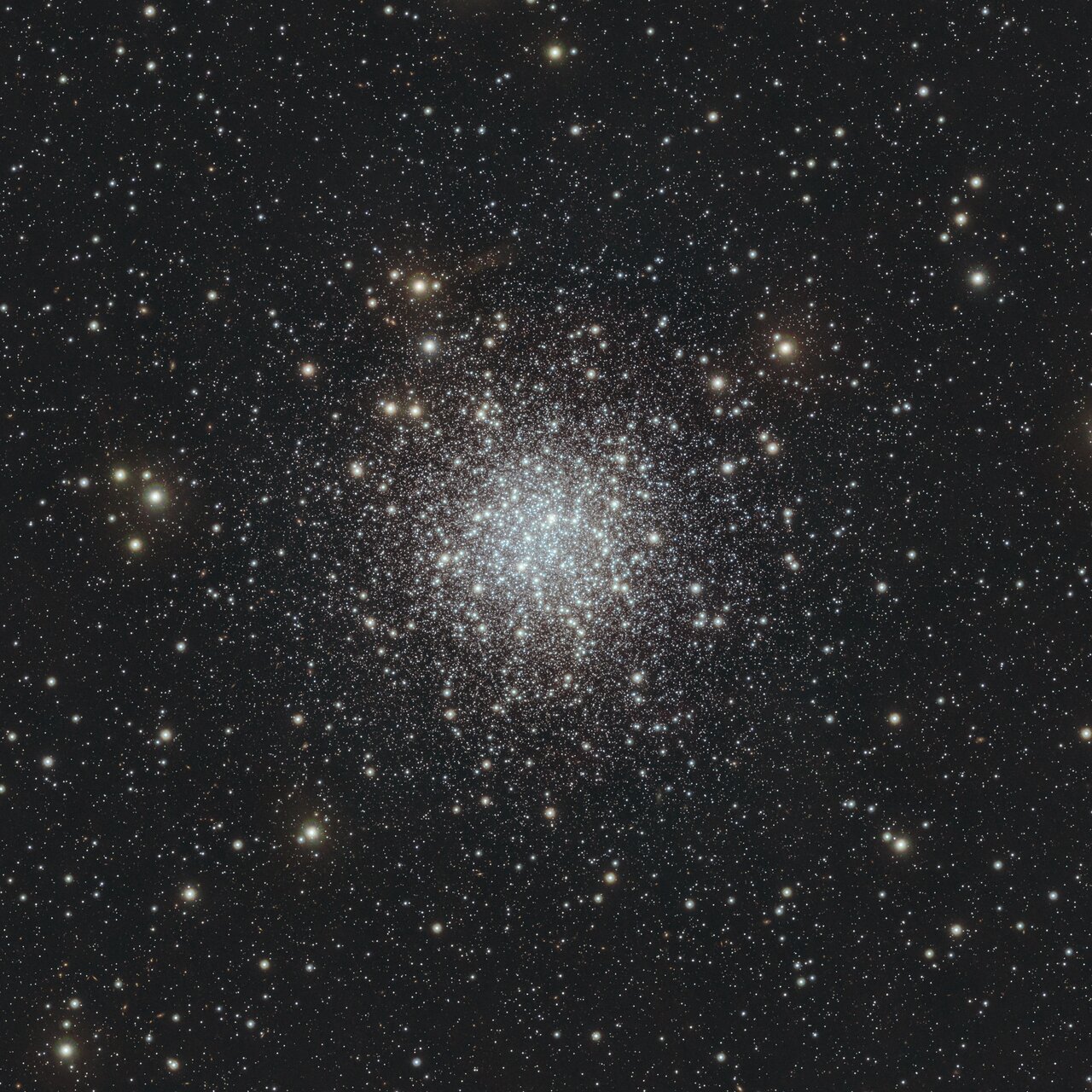Bright cluster packed with stars shines in gorgeous new infrared image
A dense grouping of stars shines brightly in a new infrared image from the European Southern Observatory.

A dense grouping of stars shines brightly in a new infrared image from the European Southern Observatory (ESO).
Astronomers using ESO's Visible and Infrared Survey Telescope for Astronomy (VISTA) at Paranal Observatory in Chile captured a detailed view of the globular cluster NGC 6723, which is located about 28,000 light-years from Earth in the constellation Sagittarius.
NGC 6723 contains hundreds of thousands to millions of stars tightly bound together by gravity. As a result, globular clusters like NGC 6723 appear as a spherical-shaped group of stars when viewed from Earth, according to a statement from the ESO.
Related: Mysterious globular clusters could unlock the secrets of galaxy formation
"Their name is derived from the Latin word globulus, meaning small sphere — somewhat misleading given that NGC 6723, as most globular clusters, contains hundreds of thousands to millions of stars," ESO officials said in the statement.
More than 150 globular clusters have been detected in our Milky Way galaxy using instruments like VISTA. Globular clusters are home to some of the oldest stars in the galaxy, with most estimated to be at least 10 billion years old. NGC 6723 is believed to be nearly 13 billion years old.
"Globular clusters were key to pinpointing our own location within the Milky Way in the early 20th century," ESO officials said in the statement. "American astronomer Harlow Shapley measured the distances to several globular clusters, and noticed that they were arranged in a roughly spherical distribution, but the sun was not at its center. He correctly inferred that the heart of the Milky Way lays at the center of this distribution of globular clusters, placing the sun in the suburbs of the galaxy."
Get the Space.com Newsletter
Breaking space news, the latest updates on rocket launches, skywatching events and more!
With hundreds of thousands, or even millions, of stars gravitationally bound together, these structures can stretch more than 100 to 200 light-years across. The recent photo of NGC 6723, which the ESO released online on Monday (Aug. 14), captures a densely packed cluster at the center with stars stretching across the full width of the frame.
Located in the Sagittarius constellation, NGC 6723 is situated south of the celestial equator, making it more easily visible from the Southern Hemisphere.
Join our Space Forums to keep talking space on the latest missions, night sky and more! And if you have a news tip, correction or comment, let us know at: community@space.com.

Samantha Mathewson joined Space.com as an intern in the summer of 2016. She received a B.A. in Journalism and Environmental Science at the University of New Haven, in Connecticut. Previously, her work has been published in Nature World News. When not writing or reading about science, Samantha enjoys traveling to new places and taking photos! You can follow her on Twitter @Sam_Ashley13.









